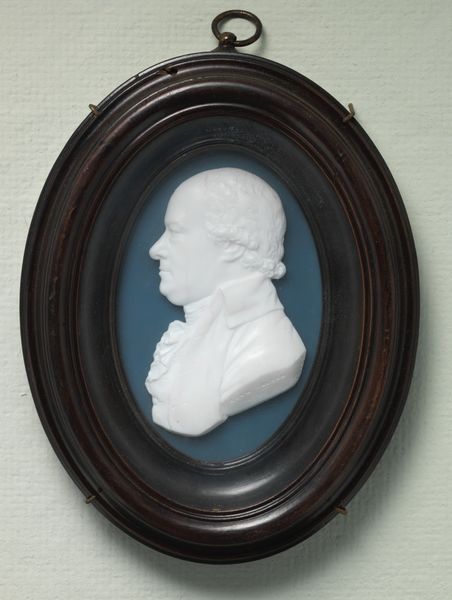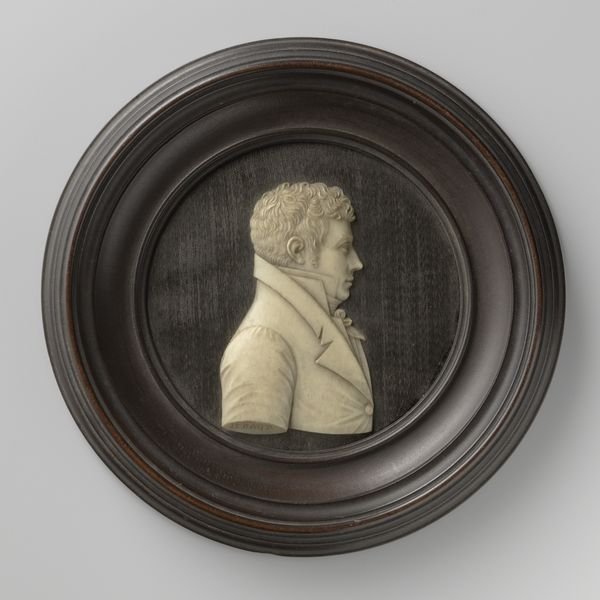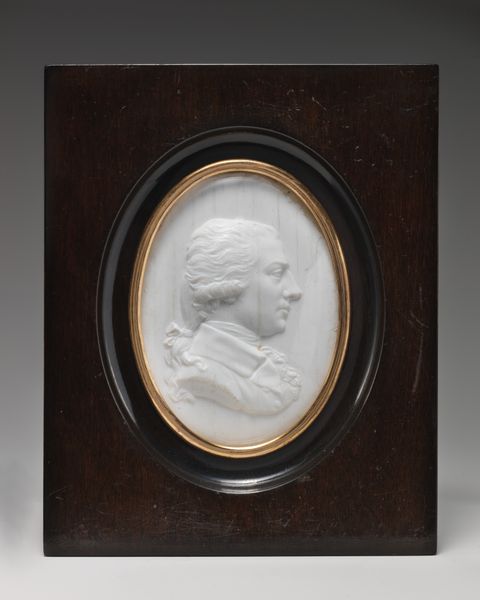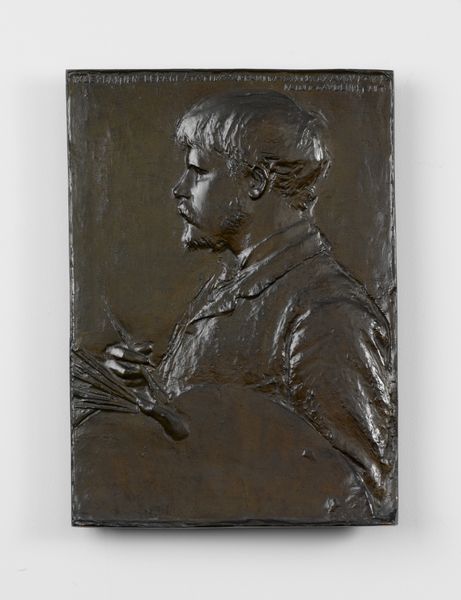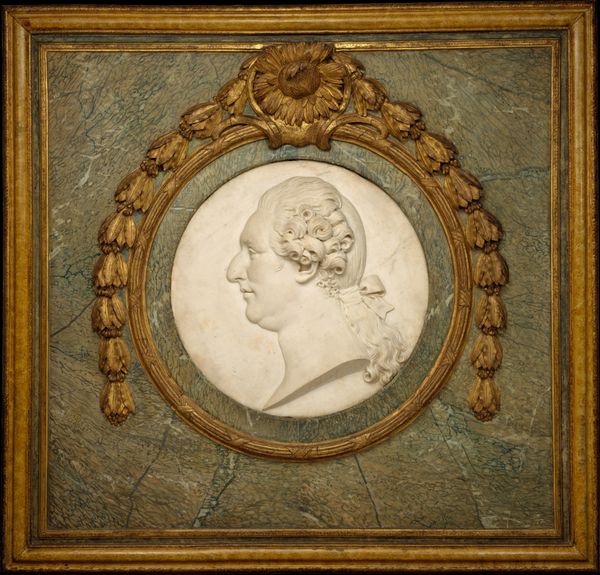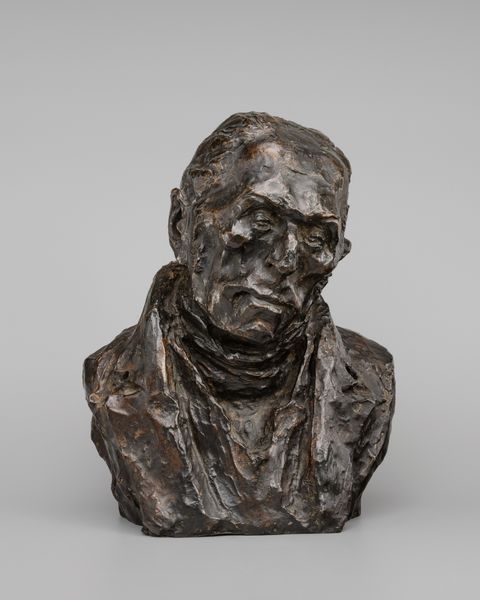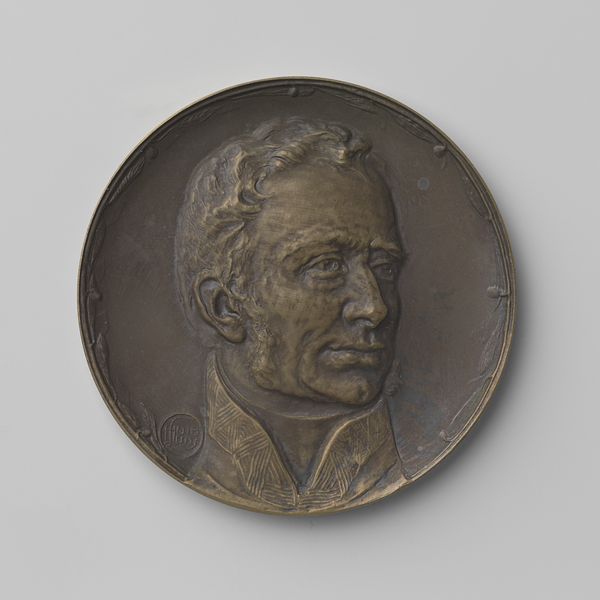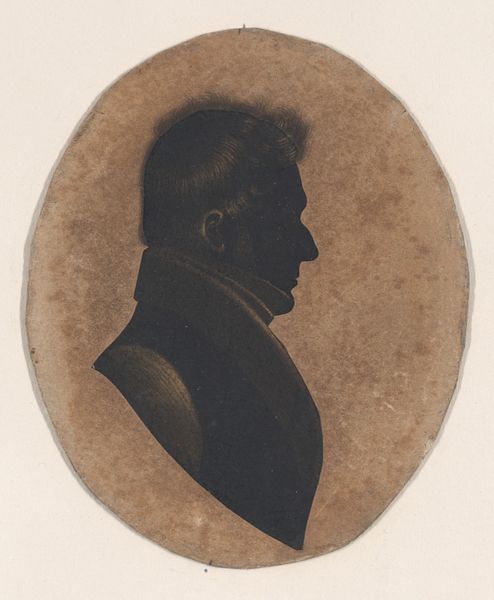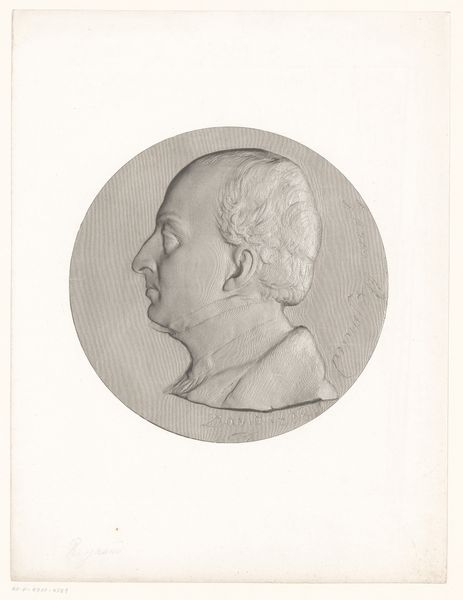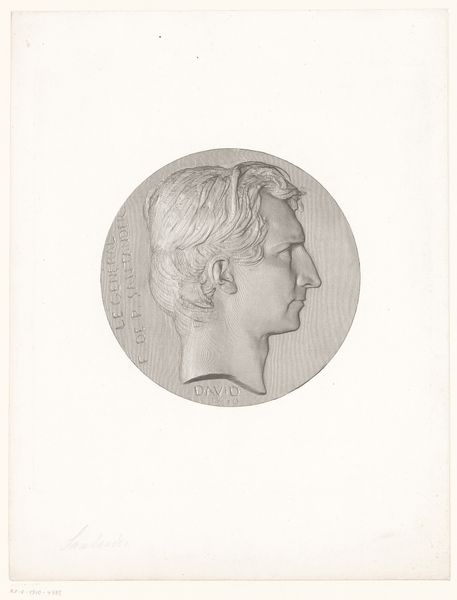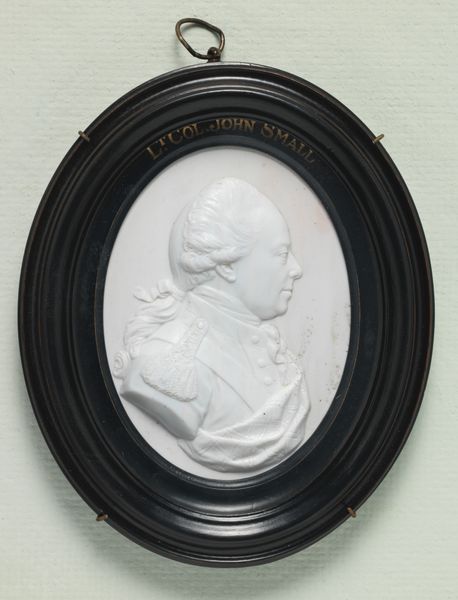
relief, bronze, sculpture
#
portrait
#
relief
#
bronze
#
sculpture
#
united-states
#
decorative-art
Dimensions: 64.8 × 63.5 × 7 cm (25 1/2 × 25 × 2 3/4 in.)
Copyright: Public Domain
Curator: This bronze relief by Karl Theodore Bitter, created around 1891, presents a profile of the architect Richard Morris Hunt. What is your immediate reaction to it? Editor: It has a somber, almost austere quality. The bronze, with its muted patina, lends it a feeling of permanence and respect. But there's also a certain stillness that I find…melancholic. Curator: The somber feeling aligns well with the intent behind such commemorative portraits, meant to immortalize prominent figures like Hunt. His contribution to American architecture was immense. Bitter encapsulates this in a timeless visual language. How do you interpret the wreath surrounding the portrait? Editor: Wreaths, particularly laurel, traditionally signify victory and honor, recalling classical Roman busts. Yet, their circular form also echoes cyclical time and commemoration. The inclusion of 'A.D. 1891' indicates it likely memorialized Hunt near the end of his career. It’s interesting how symbols of success get intertwined with reminders of mortality in public art. Curator: Precisely. These objects were placed on public buildings or in institutions connected to the honoree, thus contributing to the visual encoding of American success stories. Did these kinds of symbolic decorations influence public perceptions, or did they merely reflect already held opinions? Editor: It’s a fascinating feedback loop. They reinforce desired cultural values while simultaneously shaping public memory and the very idea of who and what a nation chooses to remember. What I find curious, regarding Bitter, is how someone like him, an immigrant artist, became an agent in this process of memorializing American elites. Curator: Indeed, Bitter, hailing from Vienna, expertly tapped into Neoclassical traditions to create pieces that resonated deeply with American sensibilities. The image, itself, becomes a potent cultural signifier of both personal achievement and collective identity. Editor: The dialogue it fosters between the classical tradition and American identity is compelling. I think seeing it gives me a fresh sense of how deliberate public commemorations always are in constructing what we consider history and heritage. Curator: It is a valuable lens, and reminds us to look at art not merely for its aesthetic attributes, but also its role in shaping society's self-image.
Comments
No comments
Be the first to comment and join the conversation on the ultimate creative platform.

